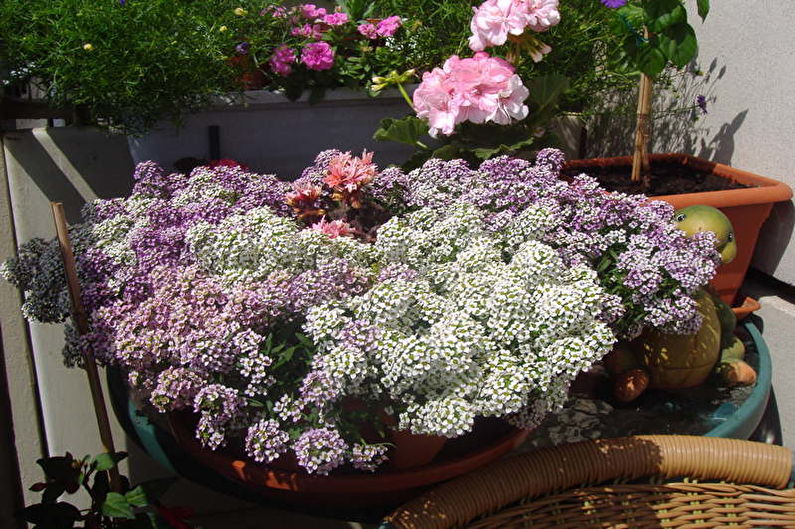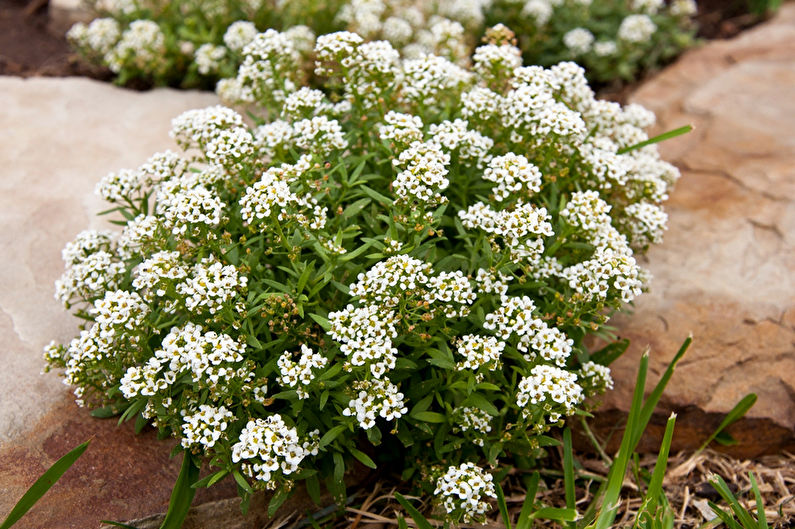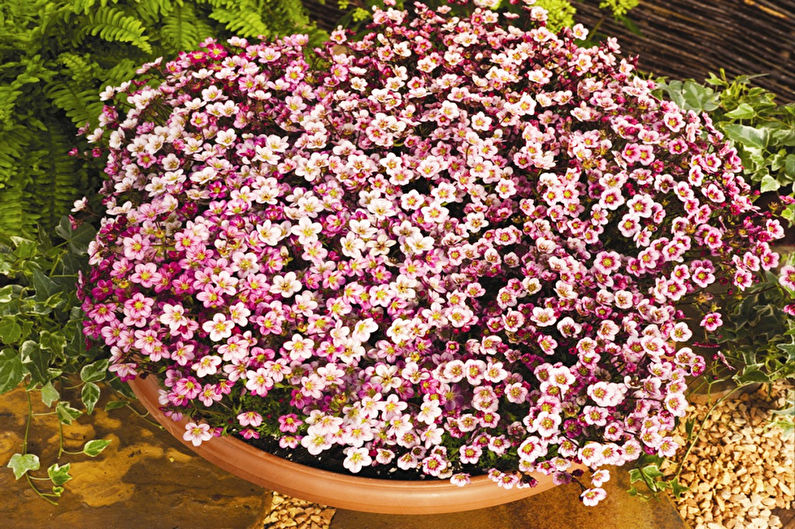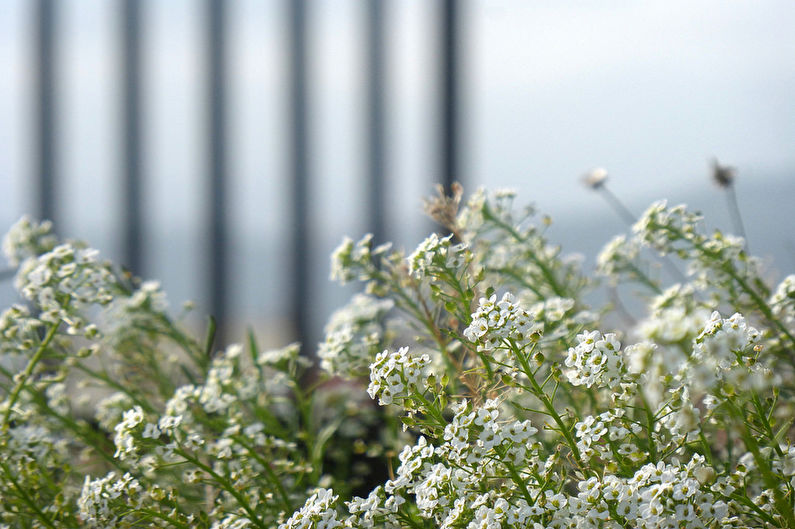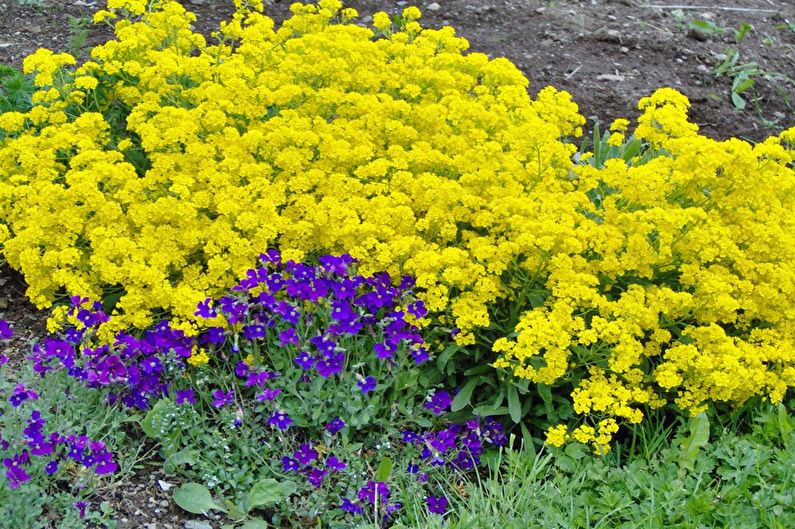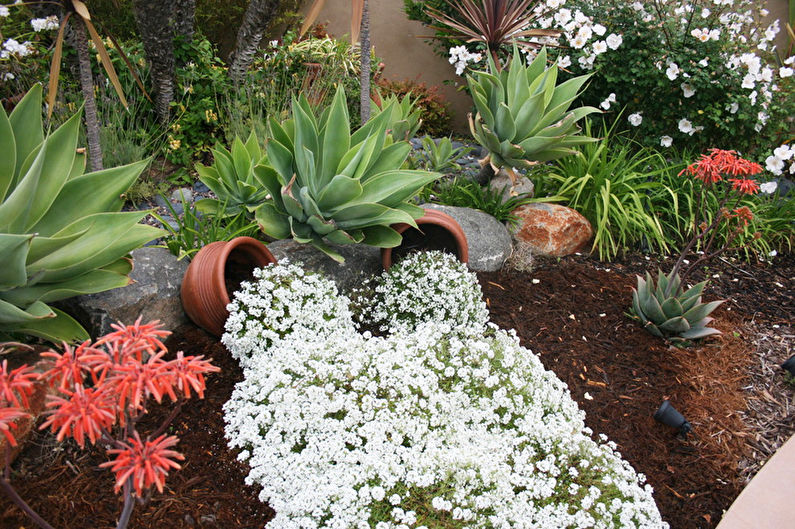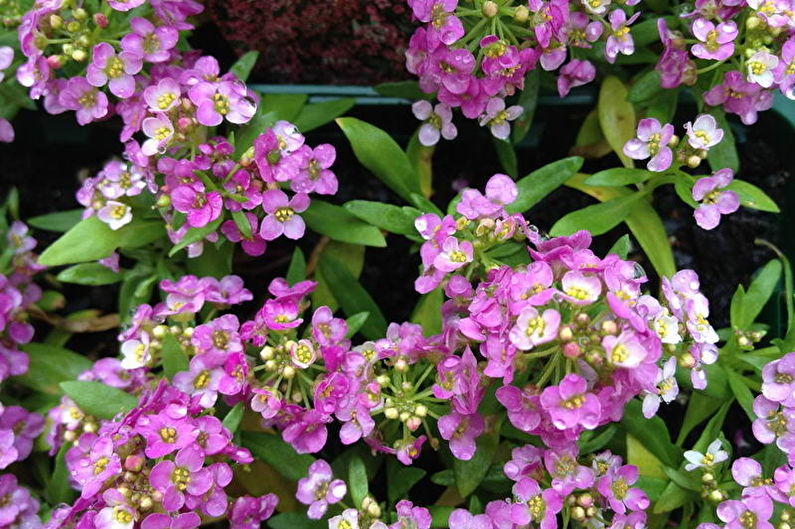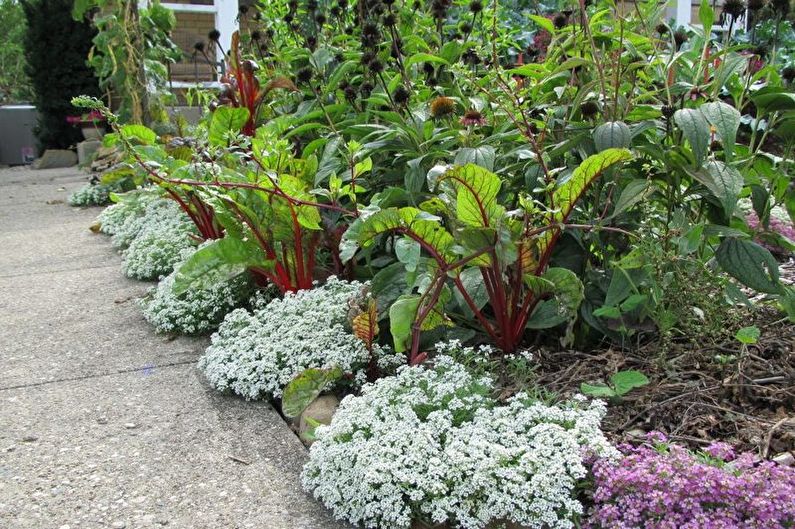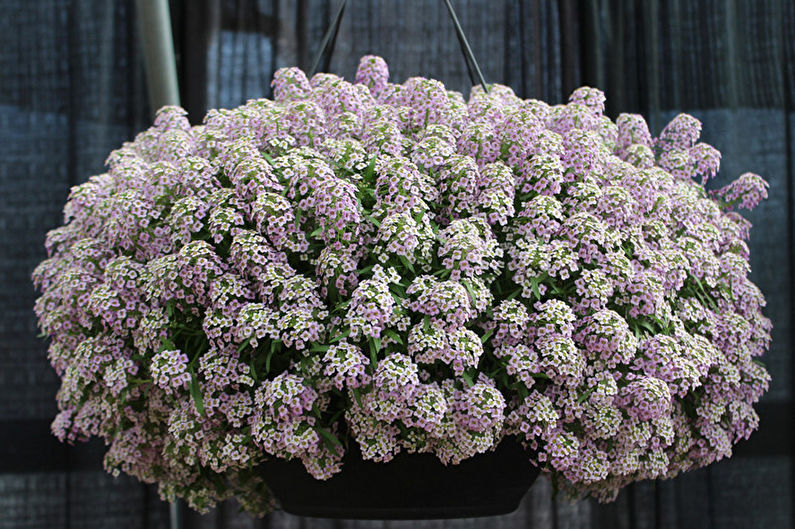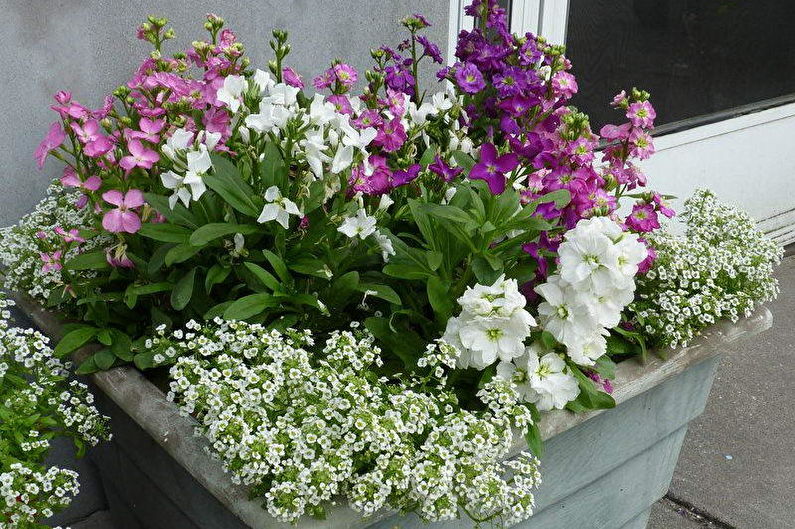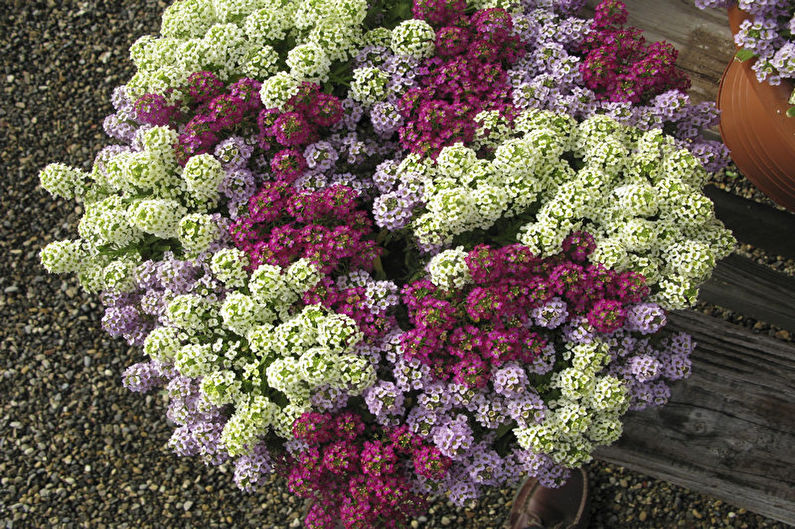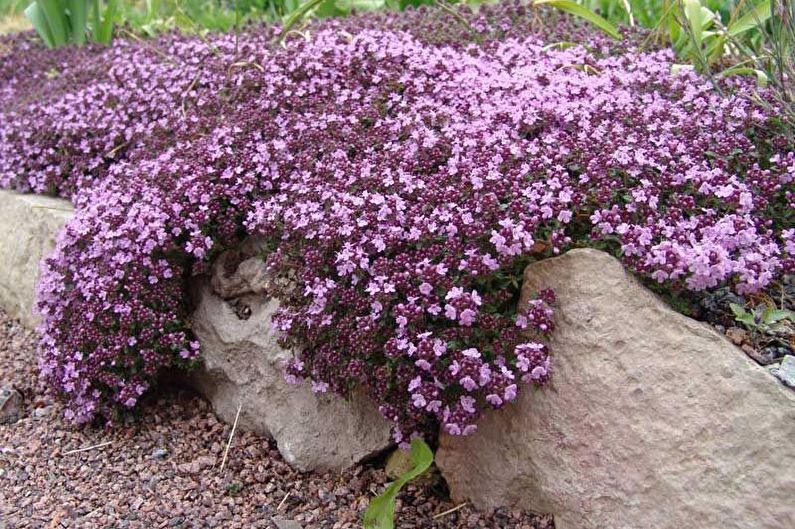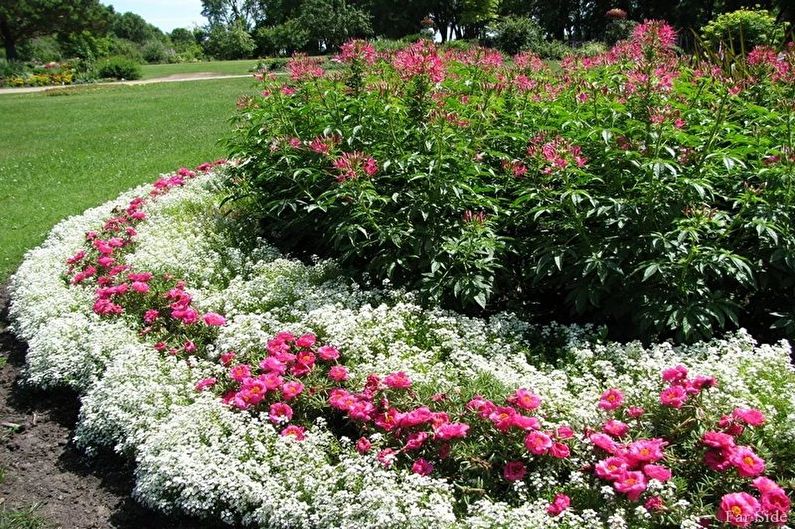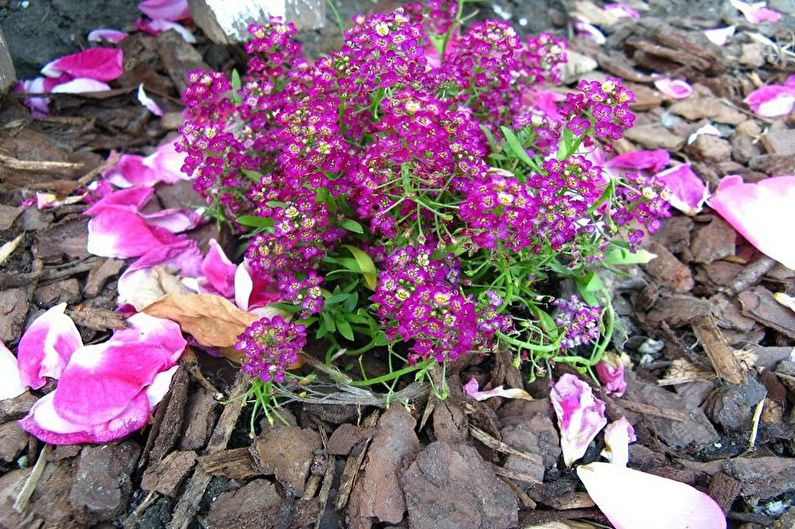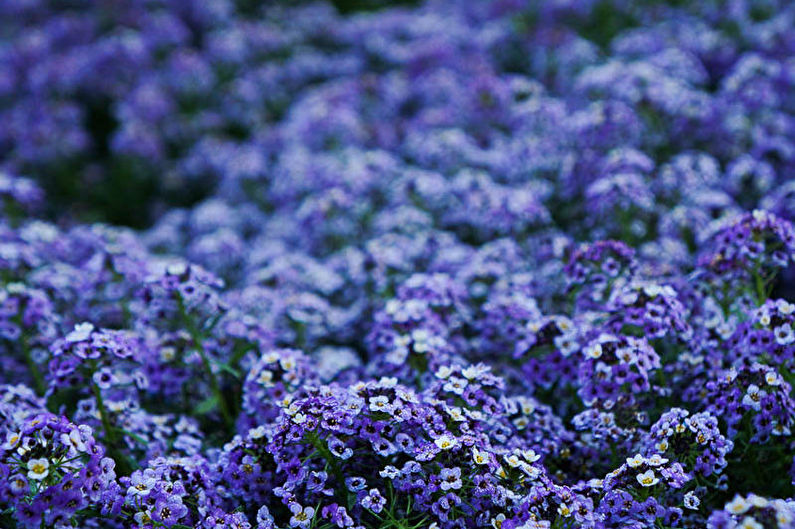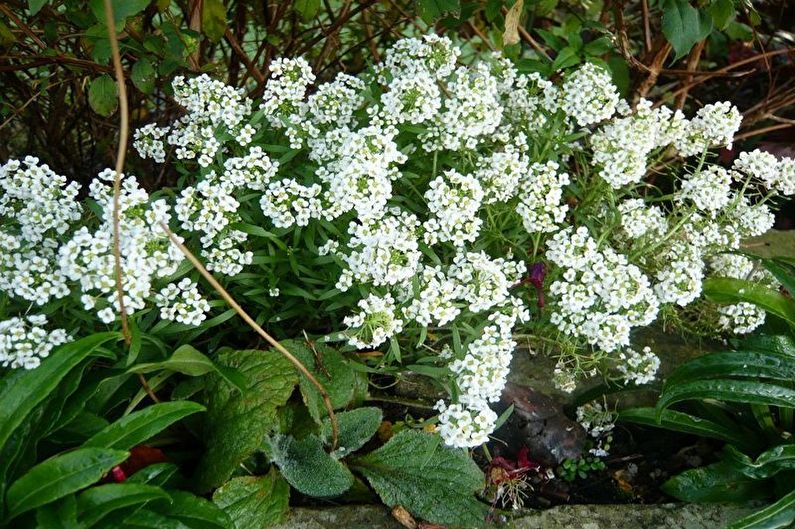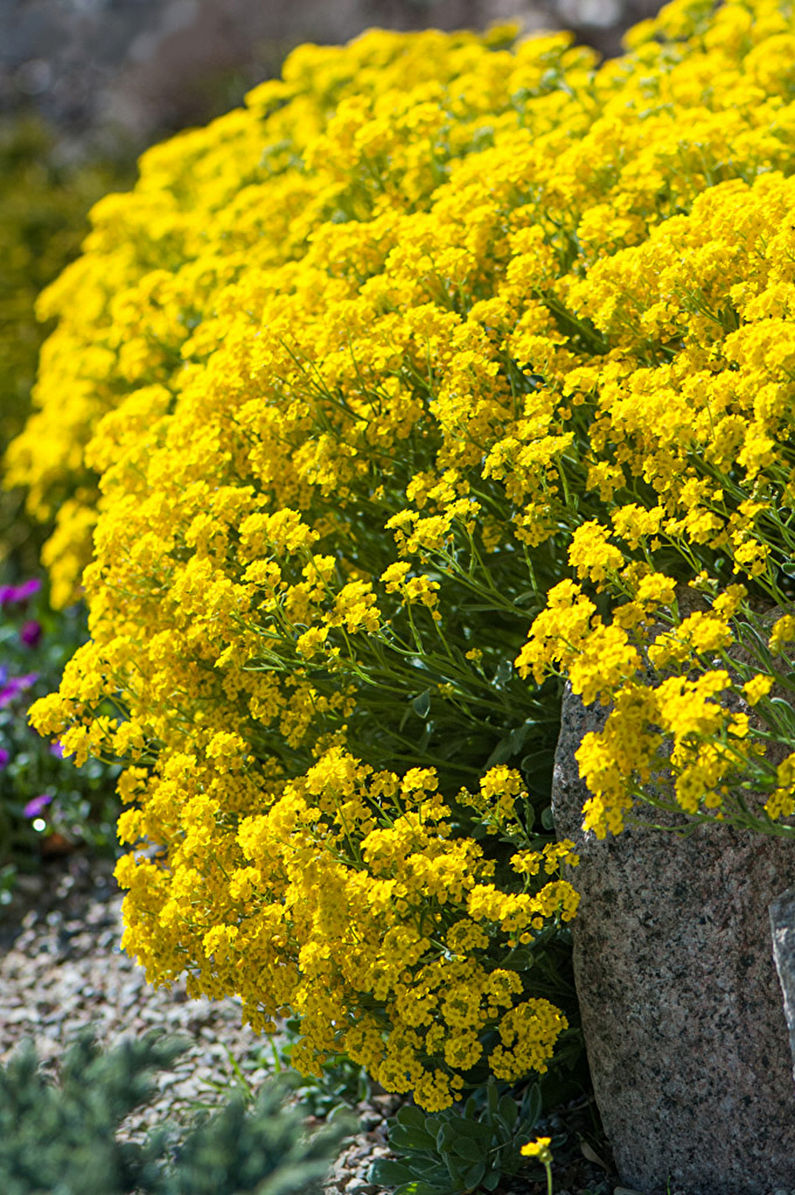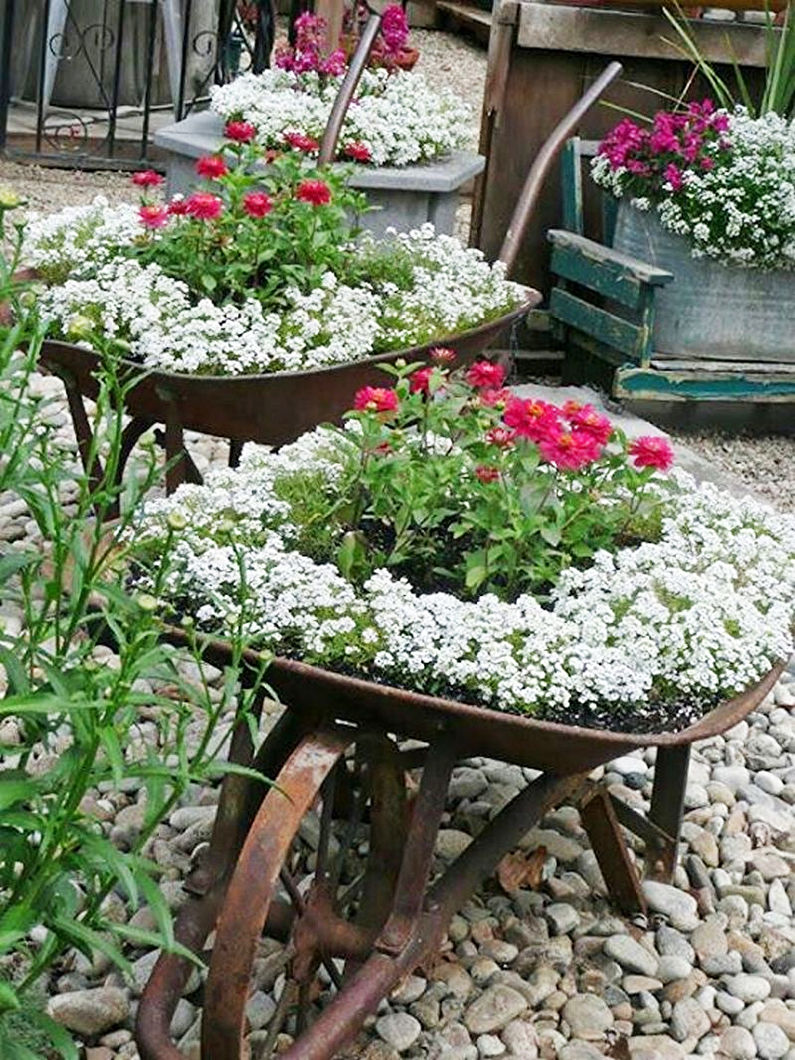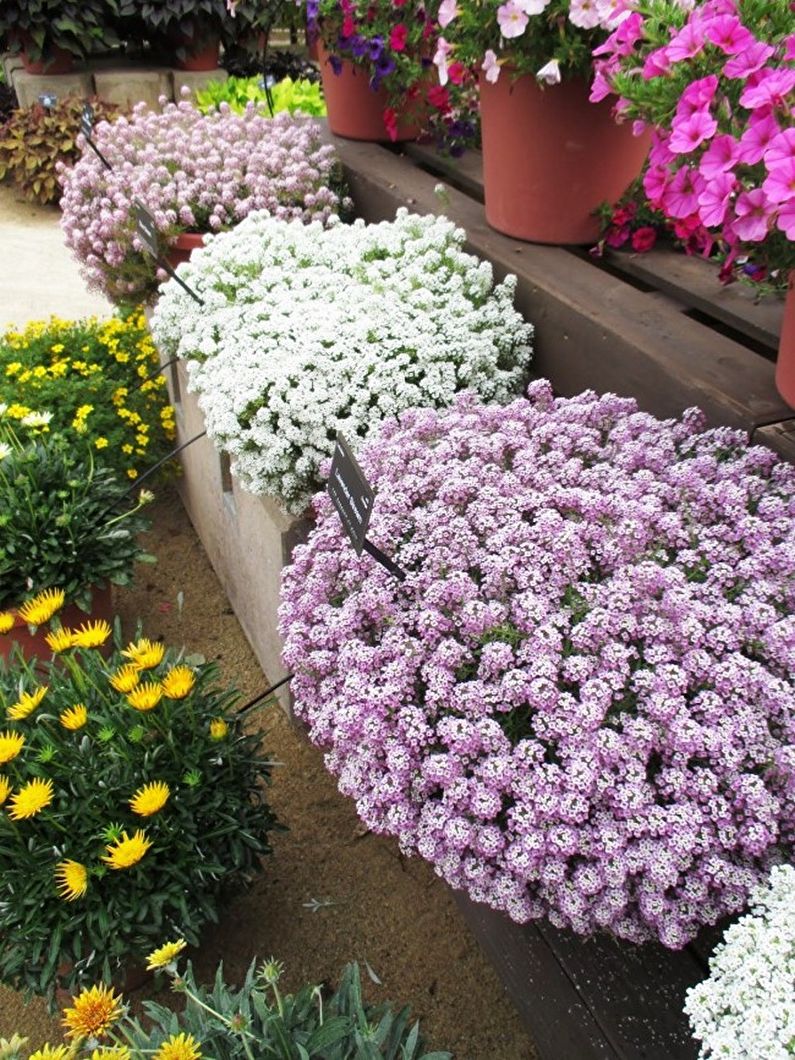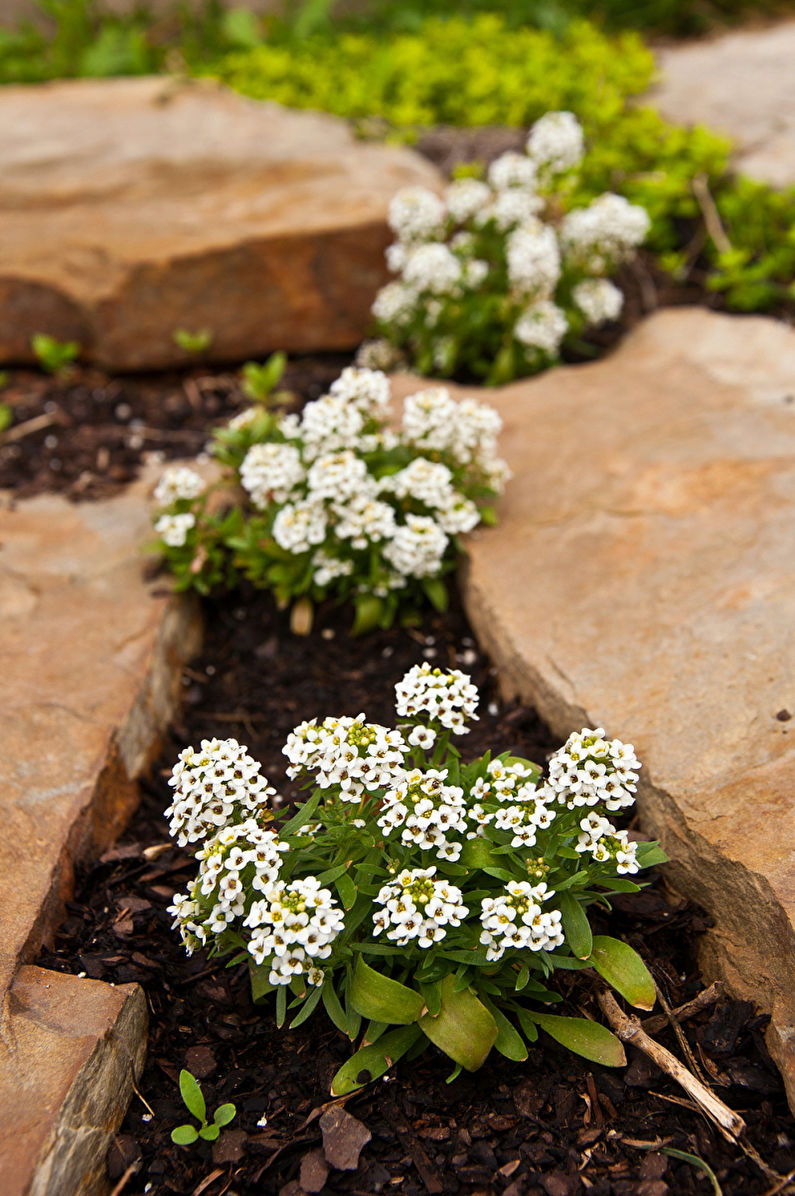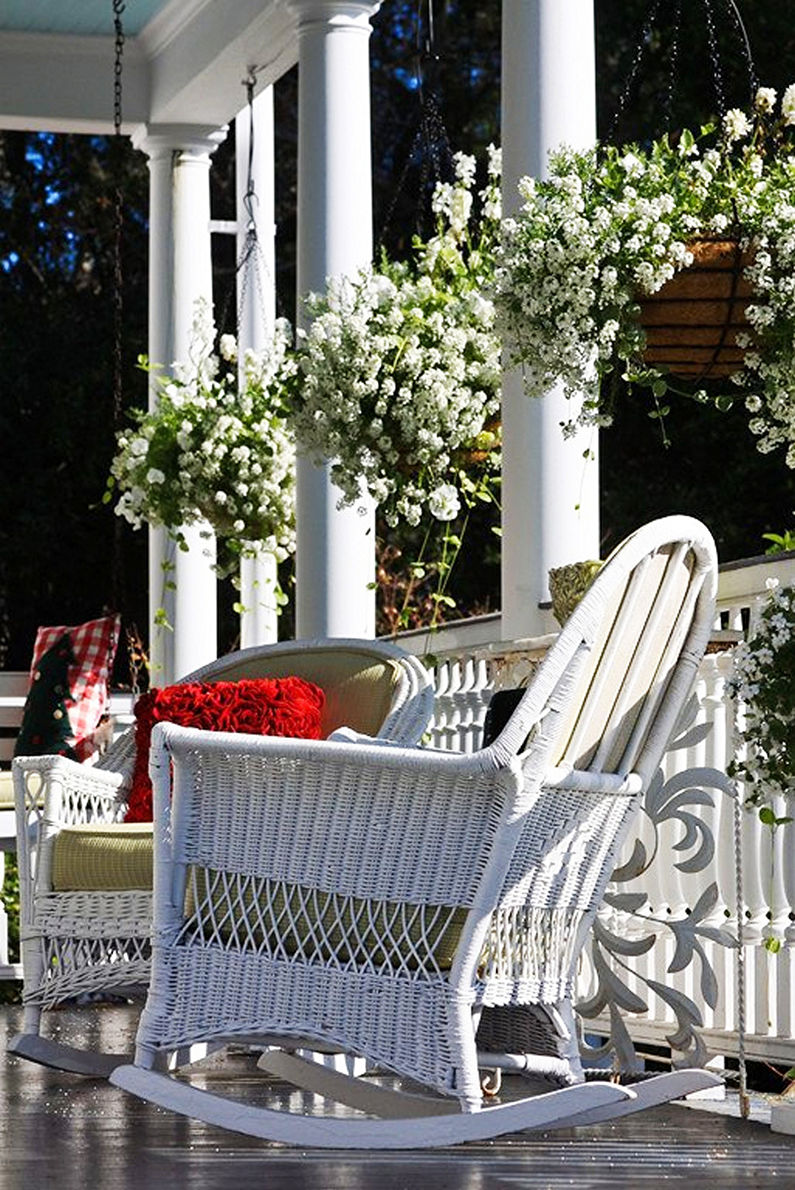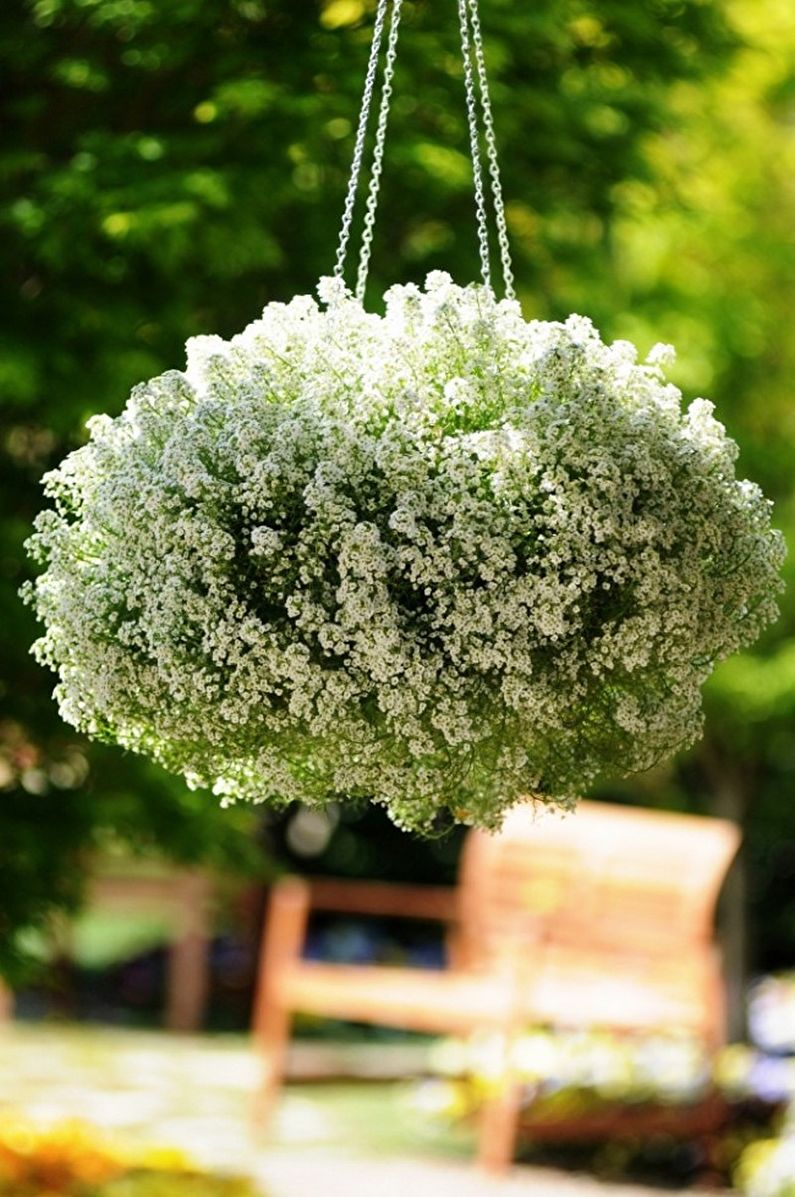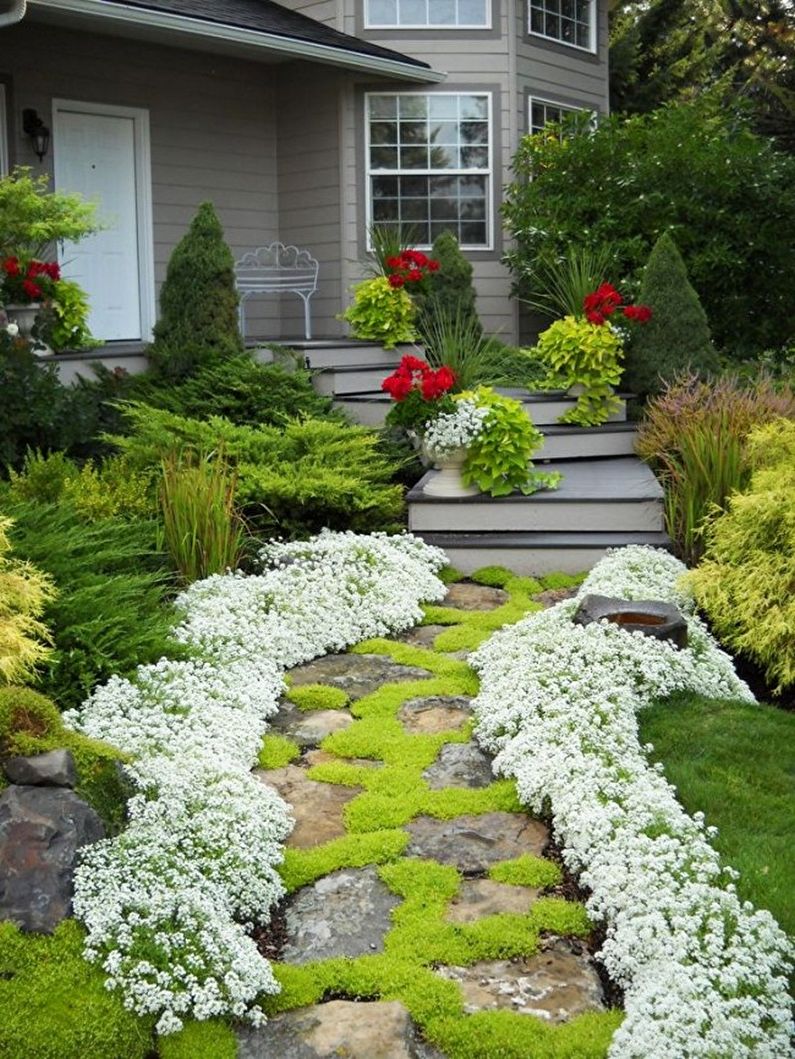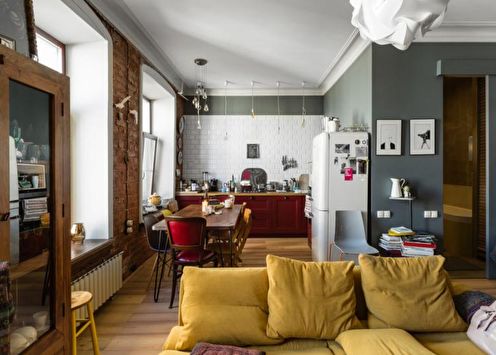
Alyssum is a bright and colorful flowering herbaceous plant. It is also known as marine lobularia, mason or alyssum. In fact, there are some differences. In particular, alissum flowers are painted in shades of fawn. In the garden, this is a wonderful integumentary plant - it is decorated with alpine hills, borders, masonry, planted in the foreground, hide bare soil. A win-win neighborhood - irises, forget-me-nots, roses and tulips. Alissum houses are grown in flowerpots on the balcony, porch or in the gazebos.
General characteristics
Alyssum refers to cabbage plants. The height, type of shoots and appearance are completely dependent on the particular variety. The coloring also depends on the same, but the most common shade is yellow and its variations. The fruit is a small seed box with the same small brown seeds.
The rhizome of the flower is superficial and fibrous. But it accumulates moisture well so that the plant survives temporary drought. The classic form of inflorescences is an elegant brush of miniature cups on four petals. The aroma of alissum attracts good insects, including bees. In culture, it is also a honey plant.
Alyssum is not only beautiful, but also useful. Decoctions are prepared from it for the treatment of fever and colds, it is part of diuretics, and is used in cosmetology as an ingredient in tonics for problem skin care. Once they even tried to treat them, bitten by rabid animals, from which the name of the plant came from. Literally, it is translated as "against dog rabies."
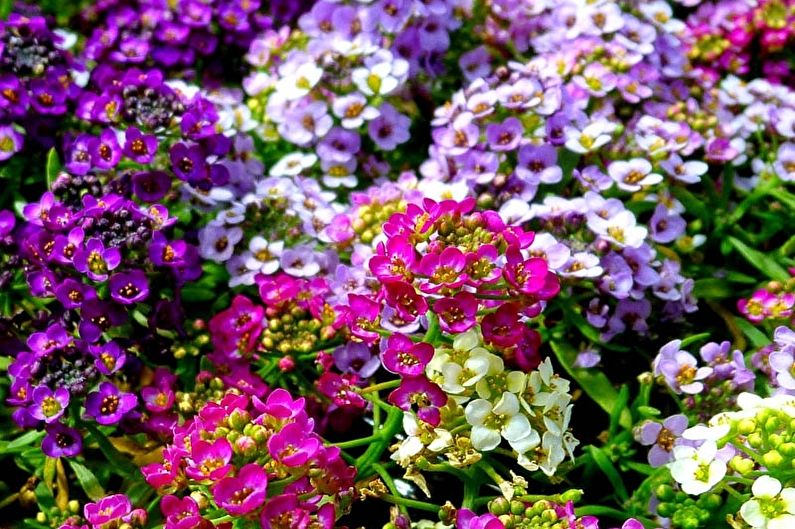
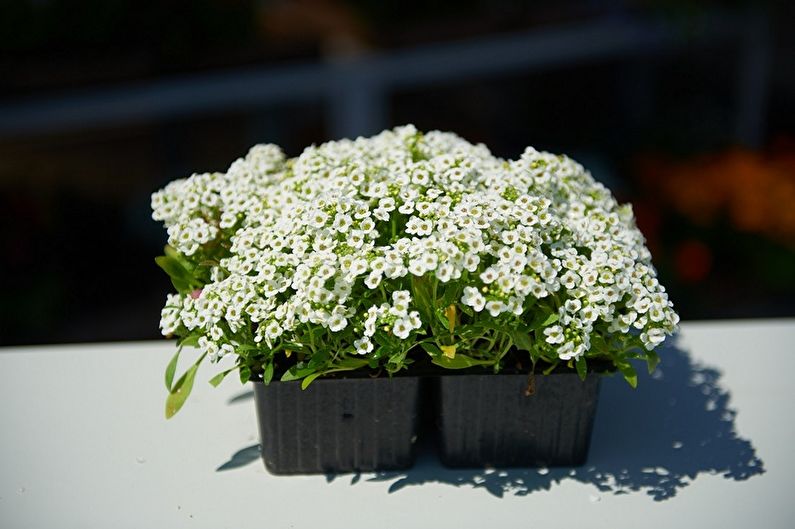
Types of Alissum
In the genus of alissums, there are about several hundred species of annuals and perennials. Most of them come from Siberia or southern Europe, as well as from the subtropical regions of America and Africa. Perennial varieties are resistant to cold and easily survive in the northern regions, but they have a shorter flowering period. Annuals bloom for a long time and are especially colorful, but grow for one year. In decorative gardening, only a few of the most famous and unpretentious species are used.
Marine lobularia
Marine lobularia is now taken as an independent species of plants, but until recently it was considered one of the varieties of alissum. This is a perennial branched plant that envelops the earth with shoots. It is relatively low, up to 40 cm, covered with silvery short hairs.
Lobularia is a thermophilic perennial. The leaves are oval and fleshy. The flowers are small golden, gathered in elegant bright brushes.
The main varieties:
- Esther Bonnet - an ampel plant with shoots up to 25 cm. Flowers are mainly pastel cream and pink shades. The variety blooms from July to September.
- Taini Tim - a miniature flower with shoots about 8 cm and fragrant snow-white flowering.
- Princessin Purple - ampel shape with long extended shoots. Inflorescences - elegant delicate lilac shade. Because of their beauty and elegance, the name of the species appeared.
- Violet Coning - a bushy plant of spherical shape. This is a low grade, up to 15 cm. The flowers are bright purple.
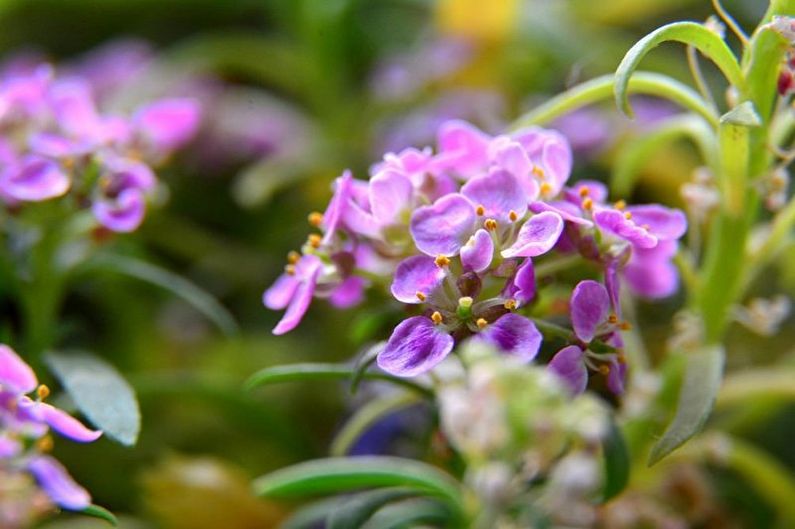
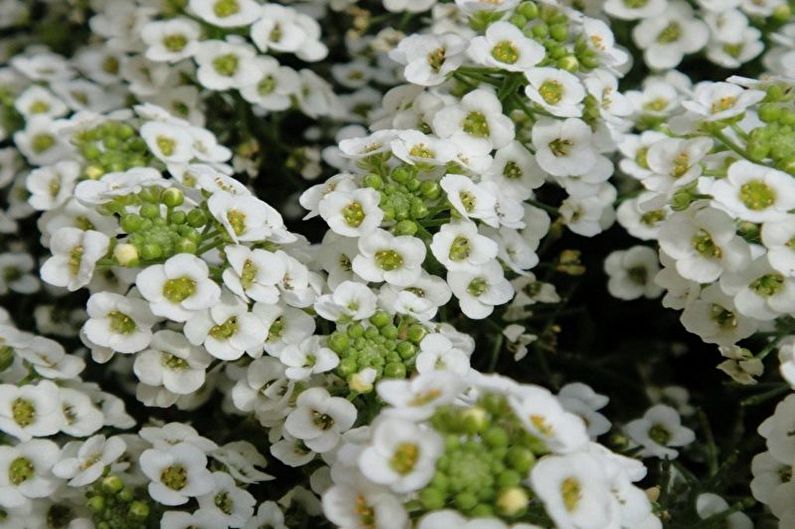
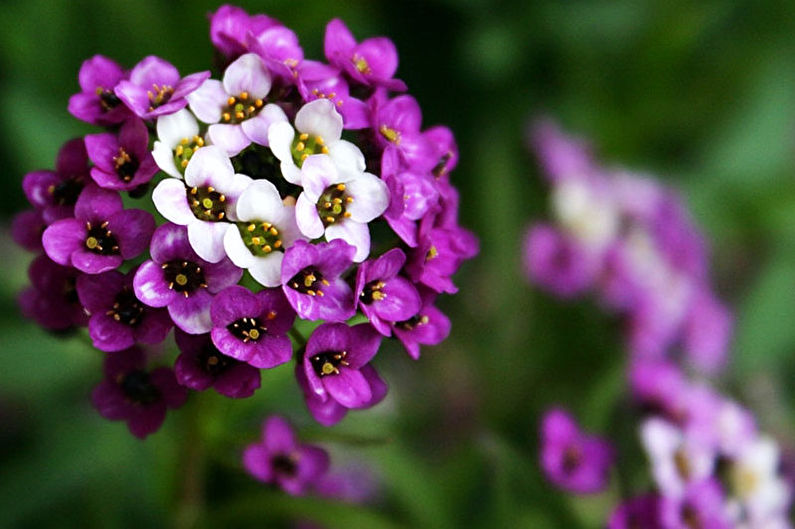
Alyssum Gmelin
Alyssum Gmelin, or mountain, is a small frost-resistant perennial. Its height is up to 20 cm. Gray-green stems of the ascending type spread along the ground. A feature of this species is the original rounded leaves, which gradually taper up and turn into lanceolate.
Inflorescences - graceful racemose, from miniature yellow flowers. They bloom in April and bloom in May. Fruits - decorative, pubescent.
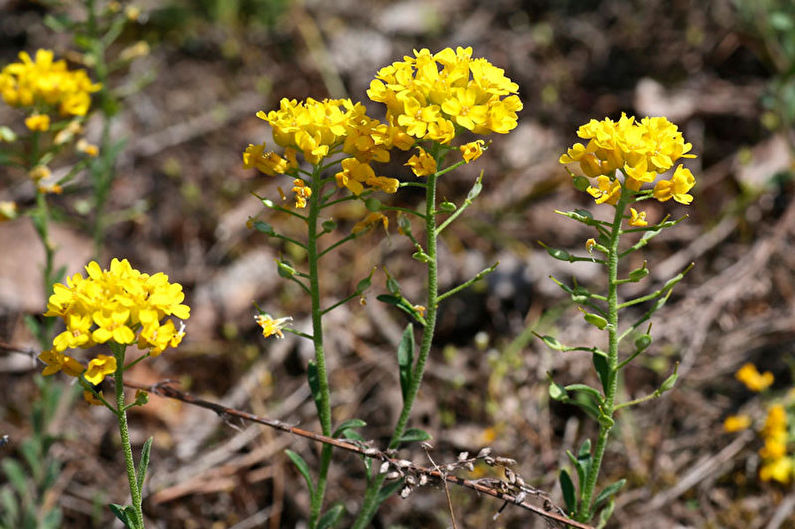
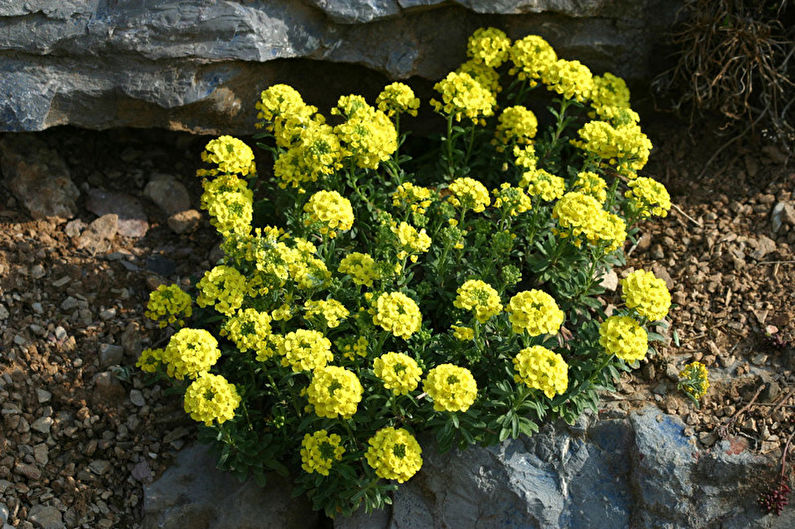
Iberian Alissum
This variety is distinguished by silvery oval leaves and an unusual color of flowers. Height - up to 20 cm.Snow-white petals contrast with brown anthers. Inflorescences are small and compact. The Pyrenees alissum blooms not in spring, but in summer.


Rock alissum
This is not an integumentary plant, but hemispherical bushes up to 25–40 cm. Thin branchy shoots even stiffen at the base. As a result, an elastic and dense ball is formed.
Rocky leaves have a gray tint due to the edge. They are assembled in elastic sockets. Sunny yellow flowers are distinguished by an interesting shape of the petals and are collected in dense brushes. The variety blooms in spring, but under favorable conditions is capable of re-flowering by the end of summer.
There are several popular varieties - bright lemon Citrinum, miniature and dense Compactum, bright and motley Variegata, brown Dudley Neville, high and long-lasting Plenum, low creeping Prokumbens and others.
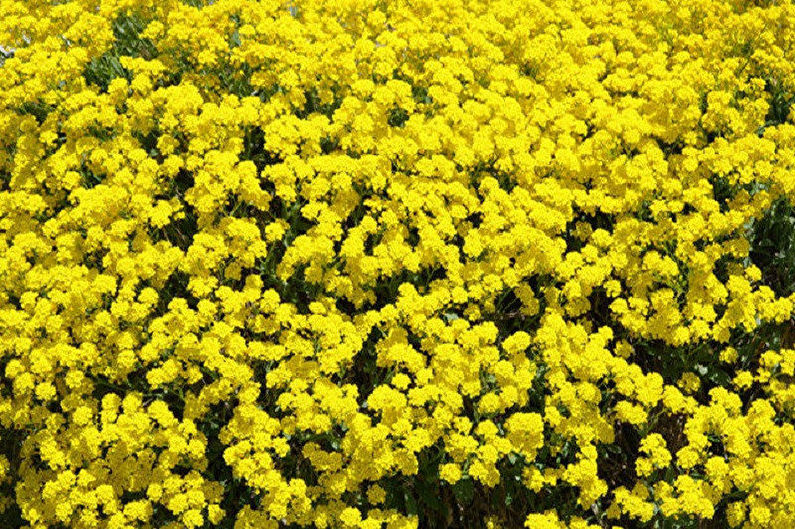
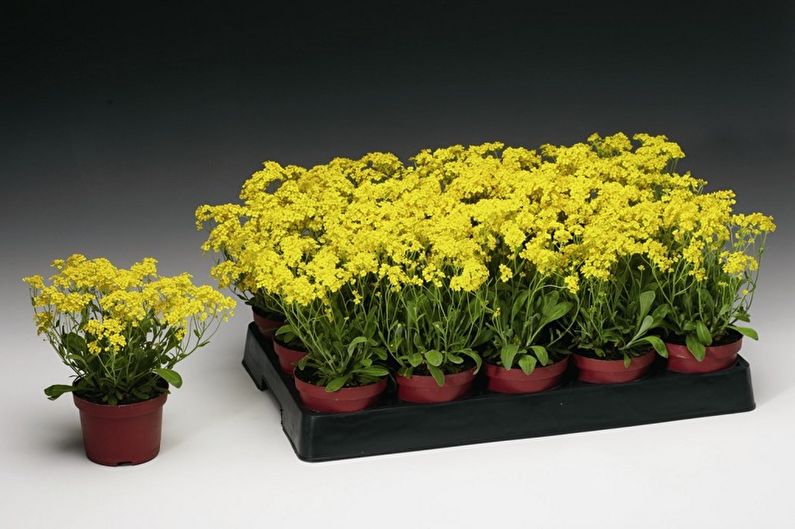
Alissum creeping
The creeping ground cover variety forms a dense, resilient, but high carpet. Its height is up to 40-60 cm. Shovel-shaped leaves have a silver tint and an unusual openwork texture. Stem - simpler, not so decorative. Flowers are small, with a diameter of up to half a centimeter. Alissum blooms by the end of spring. The color is classic, bright yellow.
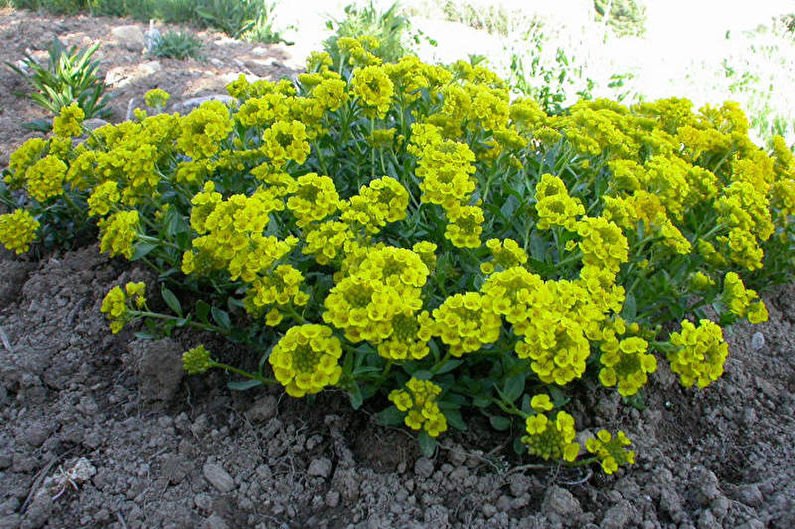
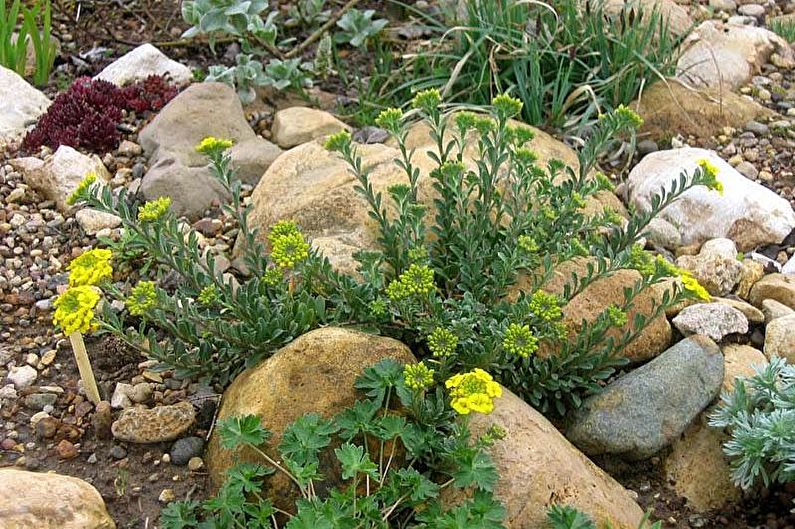
New varieties
The popularity of alissum is growing rapidly among flower growers, so breeders are introducing new decorative varieties. There are cup, sinuous, silver, rough and other types. Of the interesting new varieties worth noting:
- White carpet - a groundcover with abundant and long white flowering.
- Palletta - a miniature bushy plant up to 10 cm. Shades - any, up to brown. It is planted to create colorful flower beds and alpine lawns.
- Gold placer - a spherical bush with narrow leaves. This look differs in the shape of the brushes: they are smaller and denser, bright yellow. This alissum is used to decorate walls, masonry, rocky slides.
- The pink rug is a branched scented bush up to 12 cm. It differs in its unusual appearance: gray pubescent leaves in combination with small pink racemose inflorescences. This variety is used to frame flower beds, decorate balconies, verandas and arbors.
- Big Jam is one of the largest flowered varieties up to 35 cm. Its flowers are almost twice as large as usual. The color ranges from white to lavender and purple. It is an ideal variety for the northern regions. He is not afraid of frost and drought. Big Jam continues to bloom even during frosts down to -3C.
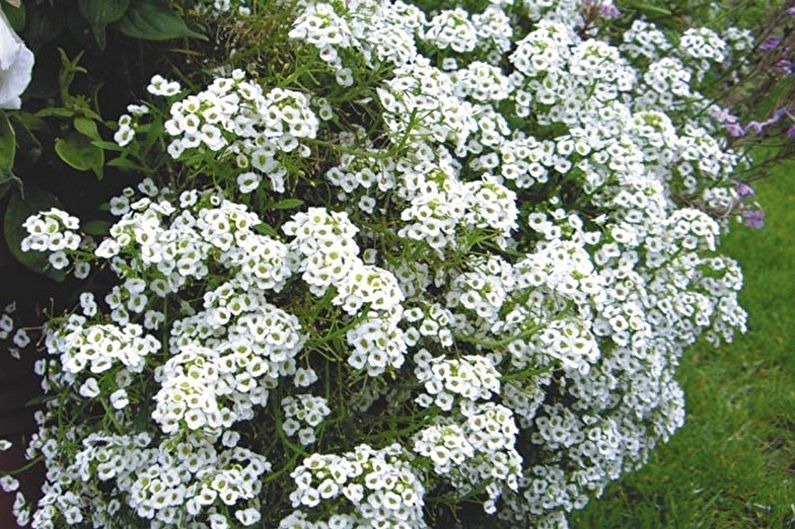
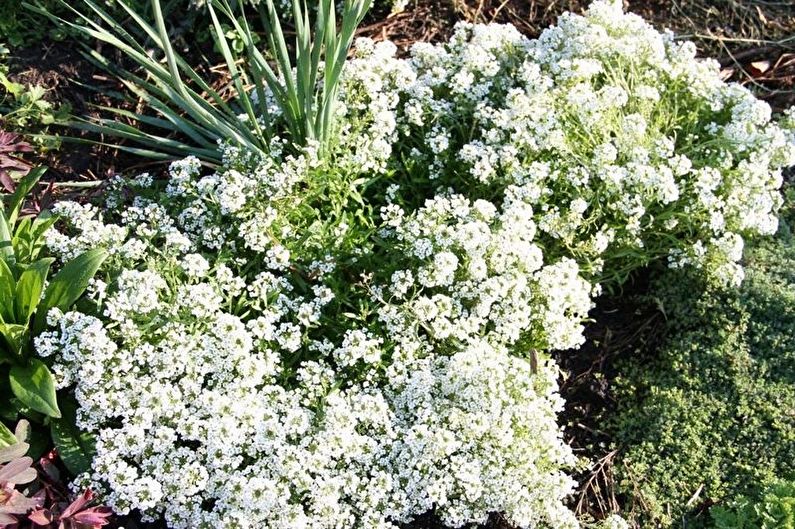
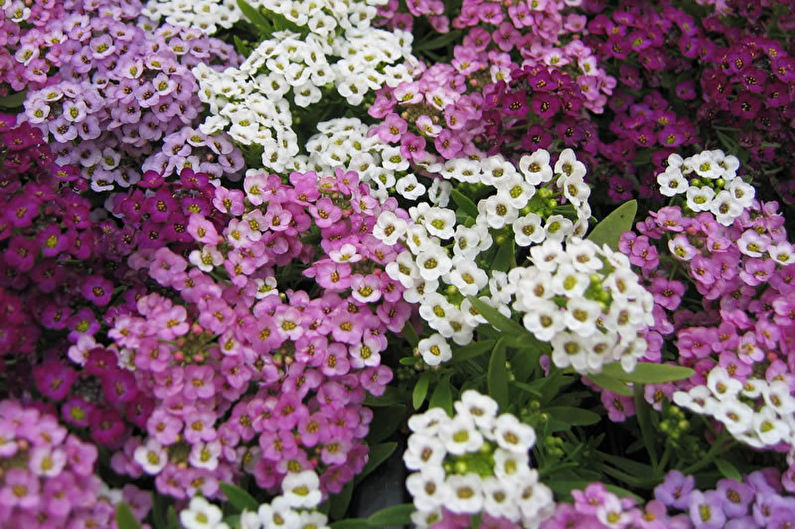
Alissum Care
Even inexperienced flower growers can cope with an unpretentious flower. Optimal soil is light fertile. Slightly alkaline mixtures may be used. Be sure to need drainage to avoid excessive moisture. It is also important not to overfeed the flower. With too intense nutrition, foliage grows well, but alissum almost does not bloom.
To prolong flowering, you need sun and air. Well-ventilated areas are an ideal choice. Aging perennials should be gradually thinned towards the young and strong.
For regular maintenance it is enough to loosen and weed the soil. Top dressing is introduced before and after flowering. For ground cover varieties, pay attention to liquid fertilizers, but they must be administered carefully so as not to burn the leaves.
Perennial varieties are pruned to extend flowering and decorativeness. Stems are shortened by about a third during ripening. Sometimes in this way, repeated flowering can be provoked. In order for annual varieties to please longer, obsolete flower stalks must be removed.
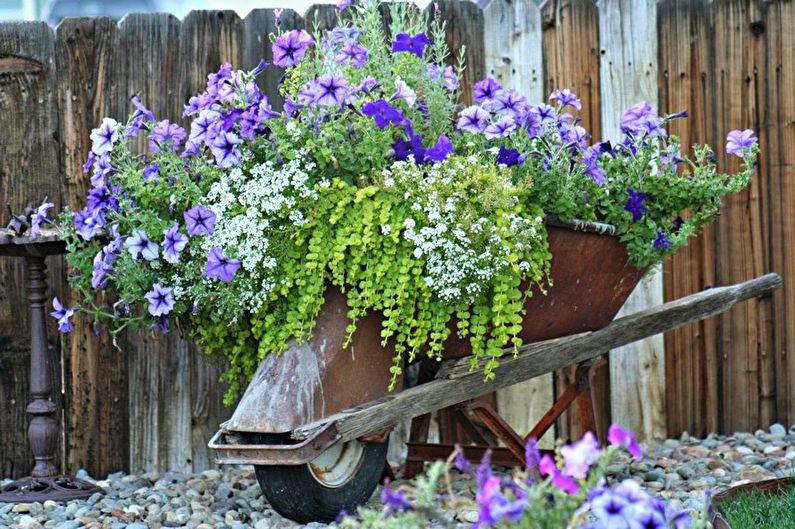
Frost resistance
Keep in mind that the limit of frost resistance of alissum is not infinite. He will not survive temperatures below -15C. In regions with severe winters, perennial varieties are covered with dry foliage, and in winter with snow. So you can prevent freezing of the rhizome.

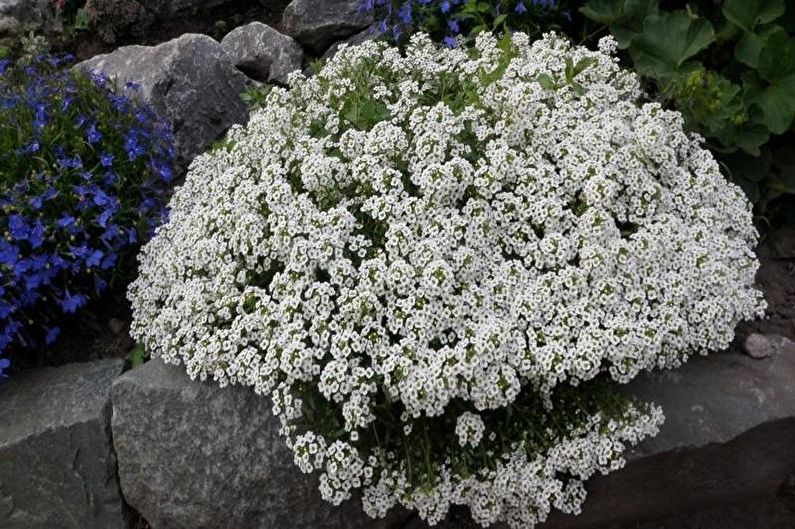
Transplantation and reproduction
The methods of growing alissum are classic:
Seeds They are sown in a greenhouse or open ground. It is necessary to evenly distribute them along the furrows up to 15 cm deep.If you plant a flower at the end of spring, by autumn it will please the first flowering. In warm regions, alissum can be planted by the beginning of winter.
Seedlings. Seedlings are always more convenient. Thus, you can almost immediately get strong flowering bushes. The first flowering begins after about 2 months. In addition, it is thus more convenient to create decorative compositions. Seeds are planted in shallow boxes, they process the soil with slaked lime and tighten the film. Boxes are kept warm in the light, with regular spraying and ventilation. Already within a week the first shoots are visible. After the appearance of the first two full leaves, the flowers can be transplanted into separate pots, and by the end of spring - into the open ground.
Vegetative propagation. This method is almost never used due to the fact that alissum in gardens is most often annual. When dividing the bush, it is important not to damage the rhizome. You can also cut the cuttings about 10 cm, which are put in water until the first roots. Then they are transplanted into the open ground, and by the end of summer - to a permanent place.
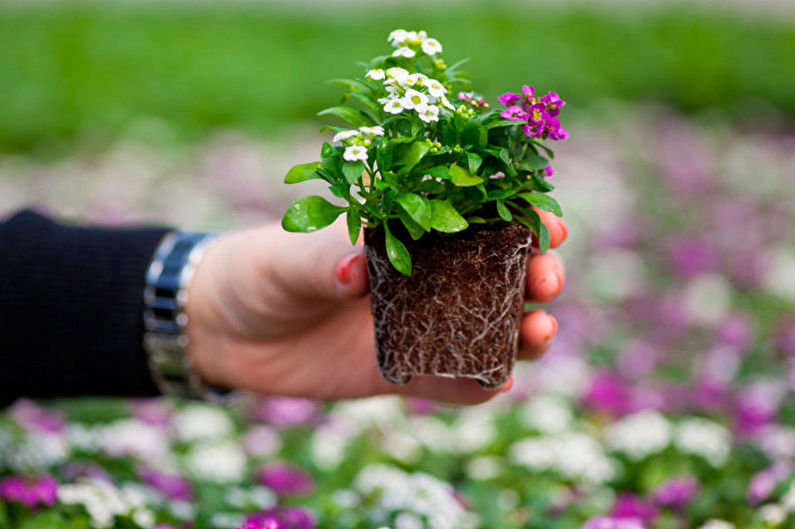
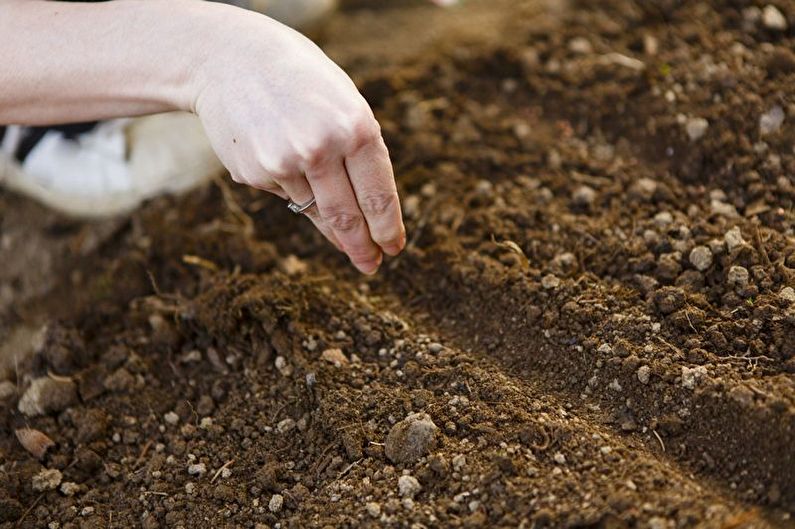
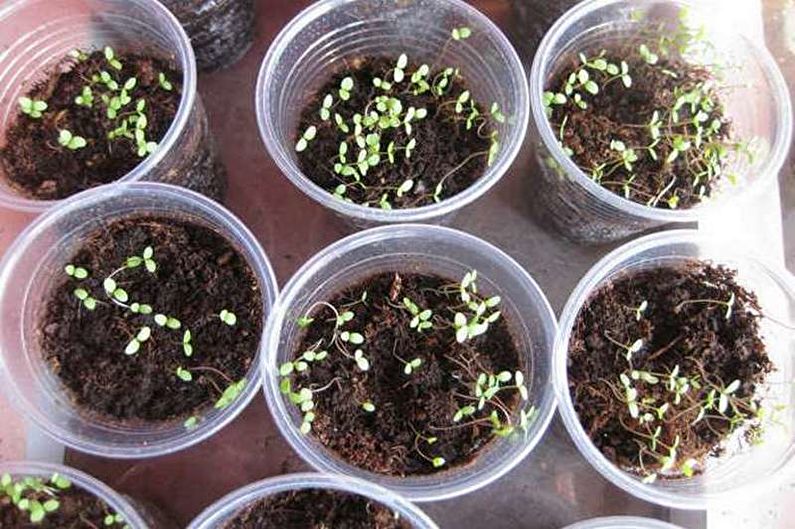
Pest and Disease Control
Alyssum is relatively unpretentious and rarely ill. Its main threat is the cruciferous flea. To remove it, you need to treat adults and mature plants with a special vinegar solution. Caterpillars are removed mechanically and removed by insecticides or tobacco infusion. Timely processing will protect against cabbage moths.
With improper care or constant overmoistening, late blight appears - a special type of root rot. In this case, fungicide treatment is needed. Powdery mildew is destroyed by Bordeaux fluid. Of the diseases, alissum also has a viral mosaic, but it is not treated.
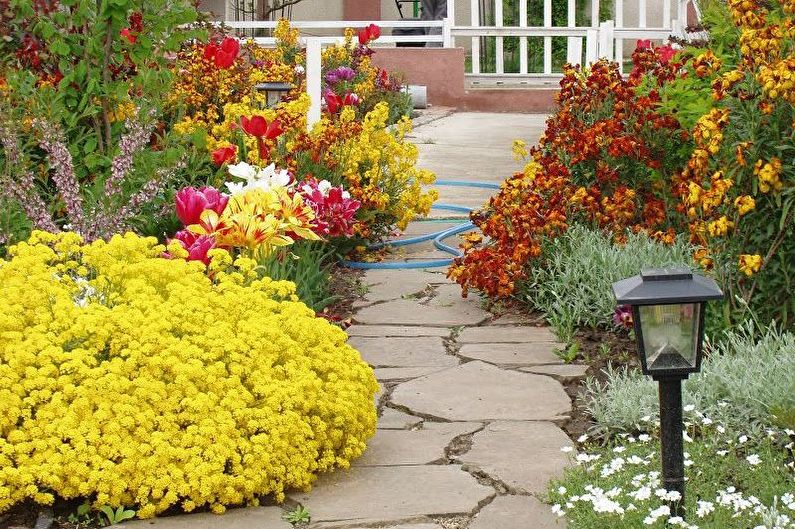
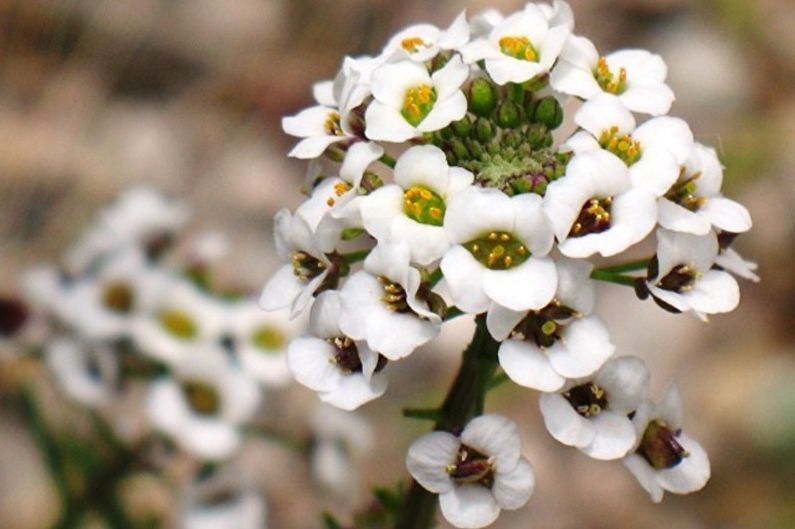
Alyssum - photo
Check out our selection of photos to find out what alissum looks like and what it combines with! With our tips, your flower garden will always be beautiful and well-groomed!
